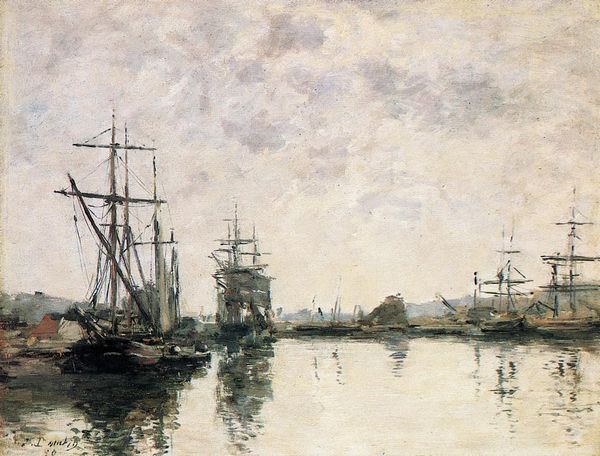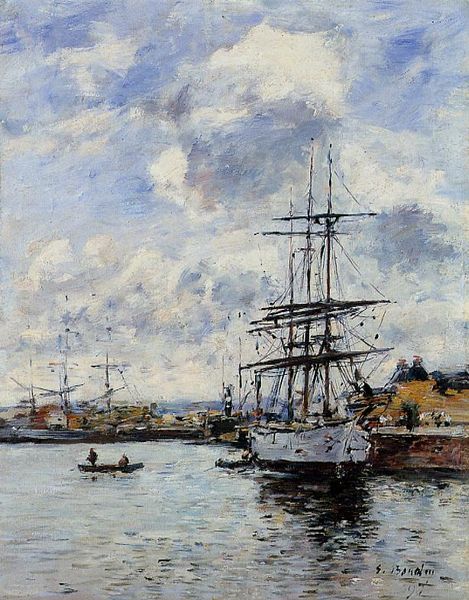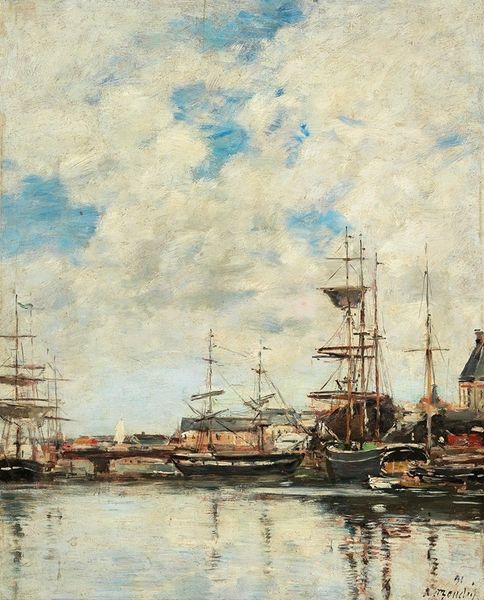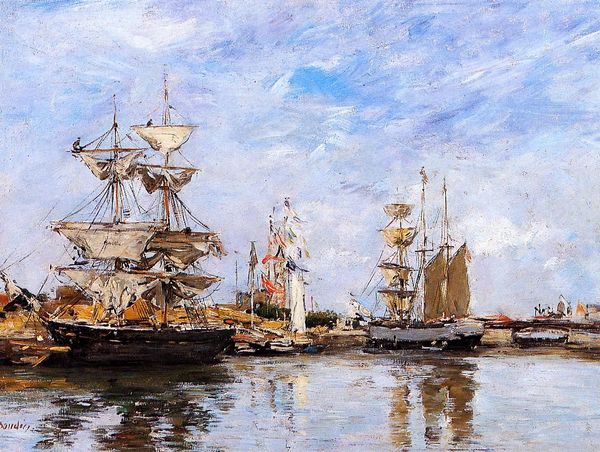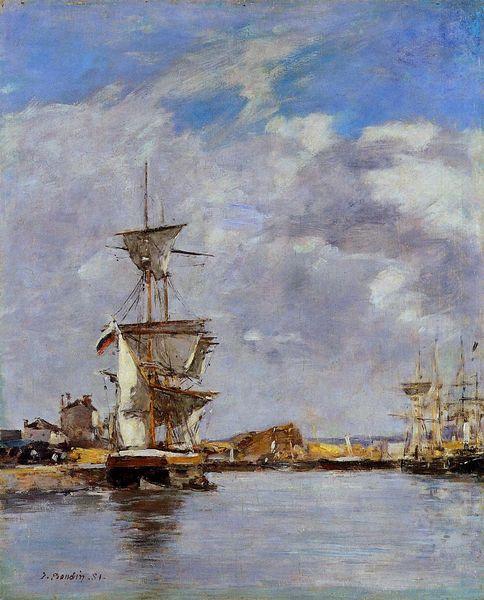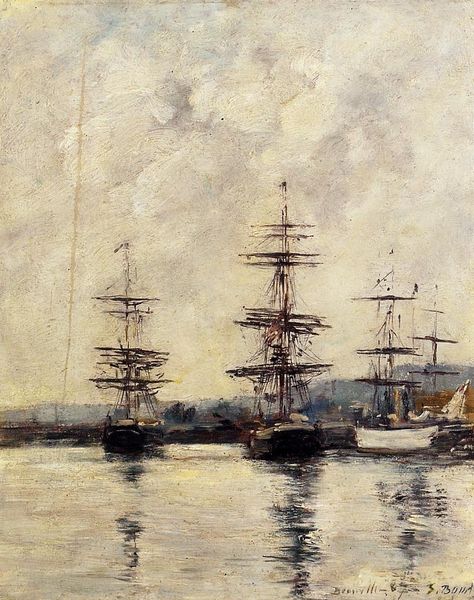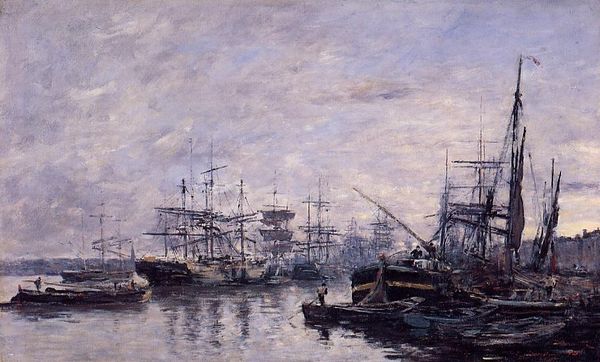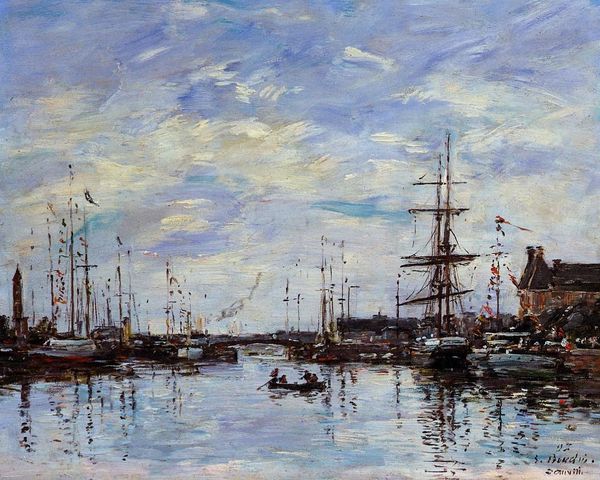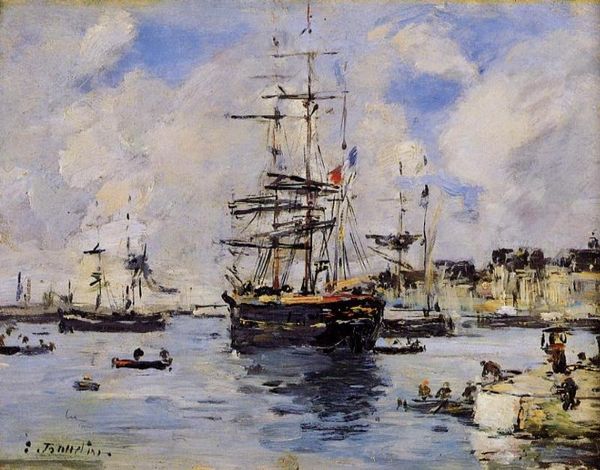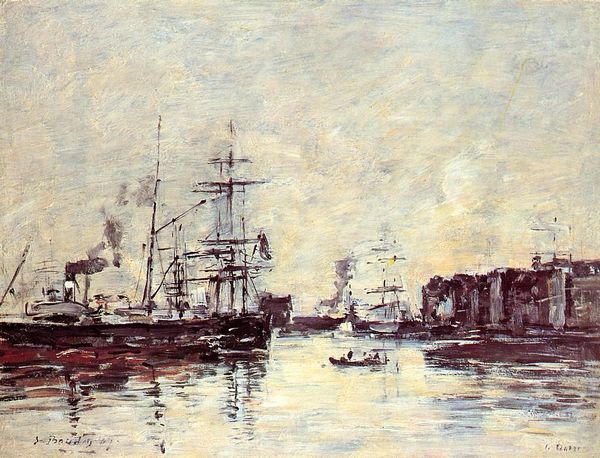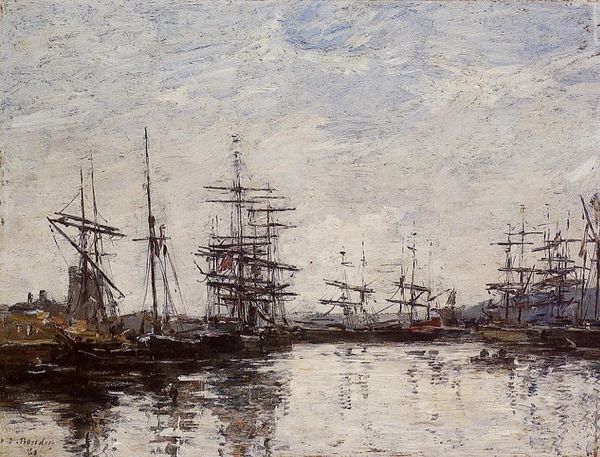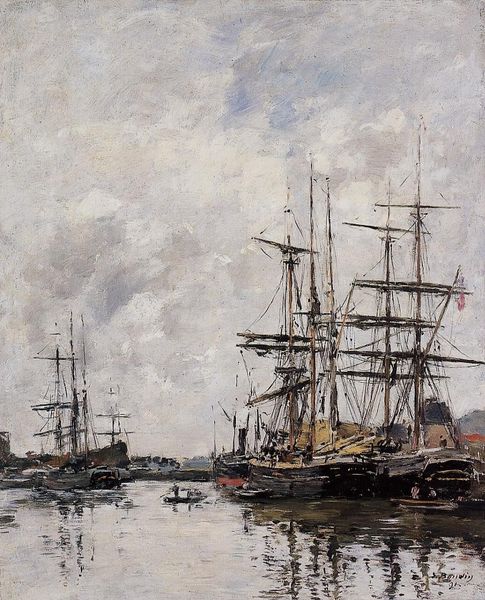
Copyright: Public domain
Editor: Standing before us is Eugène Boudin's "Le Havre, the Casimir Delavigne Basin," crafted in 1892 using oil paints. There's such a delicate interplay of light on the water, creating a really calming mood. What do you see in this piece, looking beyond its Impressionistic portrayal of a port? Curator: Let's examine the composition itself. Observe how Boudin orchestrates the spatial arrangement. The verticals of the masts punctuate the horizontal expanse of the water and cityscape. This division offers a visual rhythm, does it not? How do you perceive the balance between these elements? Editor: I notice how the masts draw the eye upward, but then the subtle reflections on the water kind of anchor the scene. There's almost a dialogue happening between the sky and the water's surface. Curator: Precisely! Now consider the use of color. Boudin employs a muted palette – primarily greys and blues – to capture the atmospheric conditions of Le Havre. This restrained application of color serves not to depict reality in a photorealistic manner but to evoke a particular mood or sensation. Do you see any deviation or disruptions to this color structure? Editor: Perhaps the small touches of rust and dark on the ships. That color prevents the harmony of the blue and grey from getting boring. It is quite a well-designed structure if I think of it! Curator: Indeed. It introduces an element of visual tension, preventing the painting from becoming overly placid. By observing closely the artist’s decisions about line, form, colour and space we can achieve a rich understanding and appreciation. Editor: This close formal examination definitely opens up the painting, pushing it past just being another pretty seascape. Curator: I agree. A painting is not simply a pretty representation. We gained a good awareness of this painting!
Comments
No comments
Be the first to comment and join the conversation on the ultimate creative platform.
